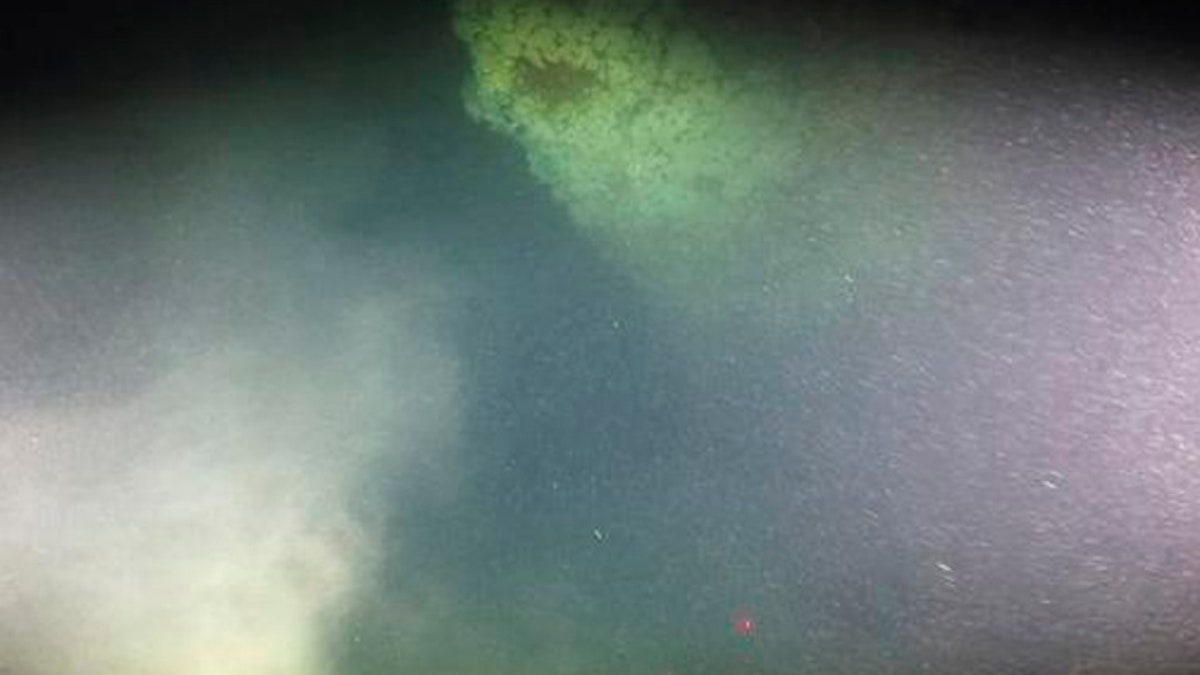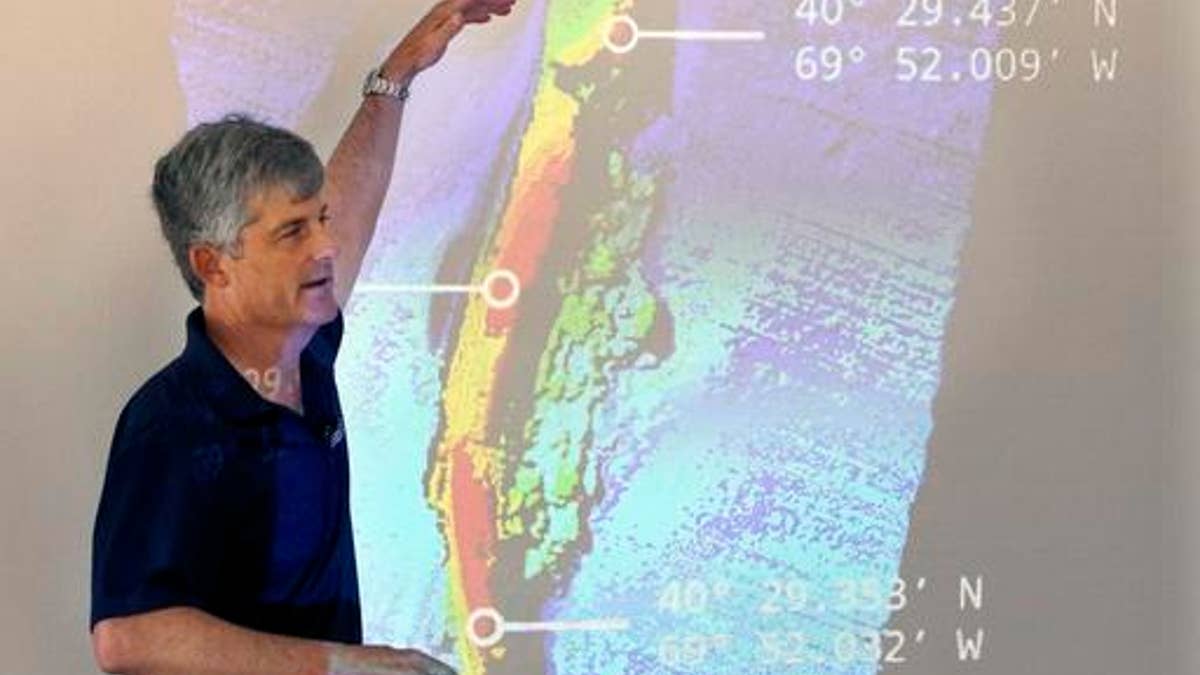
This photo released by OceanGate Inc., on June 13, 2016, shows the bow of the ocean liner SS Andrea Doria in the Atlantic Ocean near Nantucket, made during an undersea exploration of the wreck earlier this month. The ship went down after a collision nearly 60 years ago, killing 46. (OceanGate Inc. via AP)
BOSTON – The wreck of the Italian ocean liner the Andrea Doria off Nantucket may be more badly deteriorated than previous sonar images suggest, with its bow nearly broken off, a team of undersea explorers said Monday.
OceanGate, a Washington-based crew that mans an underwater vessel, spent two full days at the wreck earlier this month capturing more than a dozen sonar images of the liner, which went down in 1956 after colliding with another ship.
Fifty-one people died, 46 of them on the Andrea Doria.

OceanGate CEO and co-founder Stockton Rush speaks in front of a projected image of the wreck of the ocean liner SS Andrea Doria during a presentation on Monday, June 13, 2016, in Boston, of findings after an undersea exploration earlier this month of the wreck in the Atlantic Ocean near Nantucket. (AP Photo/Bill Sikes)
Stockton Rush, OceanGate's CEO, said the images, which are still being processed, suggest a large section of the bow has broken off since the last time a sonar image of the ship was taken two years ago by another organization.
"It looks so dramatically different," he said, speaking at Boston's Long Wharf, where the underwater vessel rested on a docked boat. "When you look at the shape of the hull, it appears a lot has come off."
Rush said it's not clear when the bow started breaking up. He said previous sonar images were taken from the surface and are not as detailed as the ones being produced by his team.
OceanGate had hoped to spend up to a week at the wreck capturing detailed sonar images. But bad weather, including high waves, heavy fog and strong winds, cut the expedition short.
"What you can control is your equipment and your people. Mother Nature can then make up her own mind," Rush said.
He said the team managed to complete two of eight planned dives — each lasting about three hours — using the Cyclops I, an underwater vessel capable of fitting five people.
The team plans to return next year to continue its sonar mapping work. The plan is to create a "virtual model" of the exterior of the wreck as well as its debris field.
Such detailed imagery could prove invaluable to scuba divers, as identifiable landmarks on the popular wreck have decayed over time, making it hard for divers to safely find their way around, Rush said.
The wreck, which rests on the ocean floor about 240 feet down and about 50 miles south of Nantucket, has claimed the lives of 16 divers over the years.
OceanGate says its expedition was the first manned submersible trip to the wreck since 1995. This July 25 marks the 60th anniversary of the Andrea Doria's sinking.




















